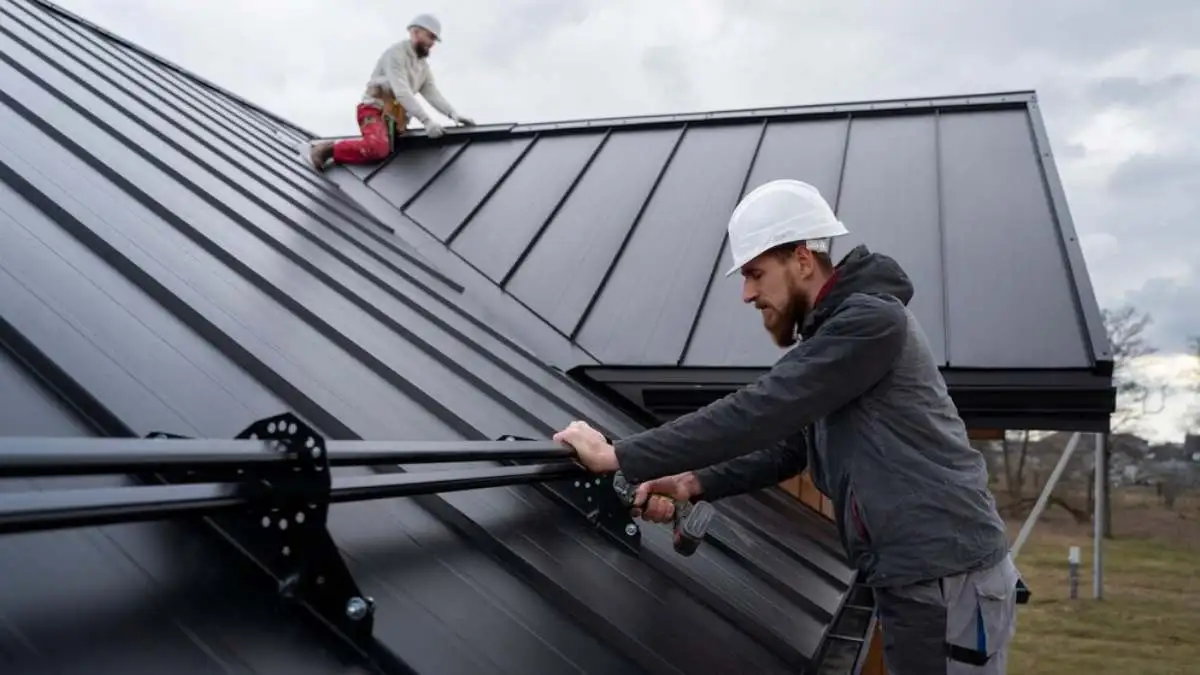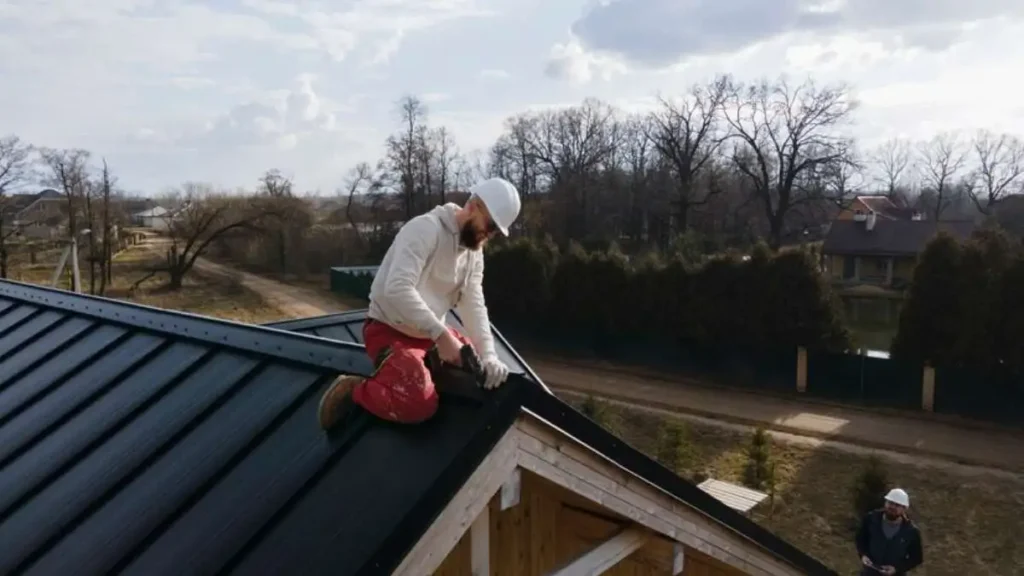HOME IMPROVEMENT
The Lifespan of a Roof: How to Maximize Durability with Regular Maintenance

A roof is one of the most critical components of any home, providing protection from the elements and maintaining the structural integrity of the building. However, like all parts of a home, roofs have a limited lifespan. Whether your roof is made from shingles, metal, or tiles, the key to maximizing its durability is regular maintenance and timely repairs.
In this article, we’ll explore the factors that affect the lifespan of a roof, tips for maintaining your roof, and why investing in regular care can save you from costly repairs or premature roof replacement. Understanding the steps you can take to extend the life of your roof ensures that you get the most value from your investment while protecting your home from damage.
Table of Contents
Factors That Impact Roof Lifespan
The lifespan of a roof can vary widely depending on the materials used, the quality of installation, the local climate, and the level of care it receives. Below are some of the key factors that influence how long your roof will last.
1. Roofing Material
Different roofing materials have different lifespans. For example:
- Asphalt shingles typically last 20 to 30 years.
- Metal roofing can last 40 to 70 years, depending on the type.
- Clay or concrete tiles can last up to 50 years or more.
The choice of material plays a major role in how long a roof will last and how much maintenance it requires. While more durable materials like metal or tile roofs may have higher upfront costs, they often require less frequent replacement, making them a long-term investment.
2. Quality of Installation
Even the best materials won’t perform well if the roof isn’t installed correctly. A poorly installed roof can lead to leaks, sagging, or even structural damage. Hiring a professional, experienced roofing contractor like Mike Ragan Roofing, which specializes in high-quality roofing solutions, ensures that your roof is installed to last and can withstand the elements.
3. Local Climate and Weather Conditions
The climate and weather in your area can also impact how long your roof lasts. Homes in regions with harsh winters, heavy rainfall, or frequent storms may experience more wear and tear than those in milder climates. For example, roofs in areas prone to hailstorms or hurricanes may suffer more damage over time, requiring additional maintenance or more frequent repairs.
In areas with hot summers and UV exposure, roofing materials can become brittle and deteriorate faster, shortening the overall lifespan.
Regular Maintenance: The Key to Extending Roof Lifespan
Just like any other part of your home, your roof needs regular care to stay in good condition. Proper maintenance helps prevent minor issues from turning into costly problems and ensures that your roof remains in top shape for years to come.
1. Annual Roof Inspections
One of the most important steps you can take to extend the life of your roof is scheduling an annual inspection. During an inspection, a professional roofer will check for common issues like loose or missing shingles, leaks, or signs of wear and tear. Regular inspections allow you to catch potential problems early and address them before they cause major damage.
Many homeowners don’t realize they have roof issues until they notice water stains or leaks inside the house—by that point, significant damage may have already occurred. By being proactive with roof inspections, you can avoid expensive repairs and extend the overall lifespan of your roof.
2. Cleaning Gutters and Downspouts
Gutters play a critical role in directing water away from your roof and home. When gutters become clogged with leaves, debris, or dirt, water can back up and pool on the roof. This can lead to water damage, rot, and even leaks. Regularly cleaning your gutters and ensuring they’re in good working order helps prevent these issues and protects your roof from water-related damage.
Especially during the fall, when leaves are falling in abundance, it’s essential to keep gutters clear to maintain proper drainage. Ensuring that your gutters are well-maintained is a simple yet effective way to protect your roof and home.
3. Trimming Overhanging Tree Branches
While trees provide shade and enhance the beauty of your property, overhanging branches can pose a risk to your roof. Branches that hang too close to the roof can scrape against shingles during strong winds, causing damage over time. In the worst-case scenario, heavy branches can break off and fall onto the roof, leading to serious structural damage.
Trimming back overhanging branches reduces the risk of damage and keeps your roof clear of debris like leaves, twigs, and branches, which can accumulate and cause drainage issues.

Common Roof Repairs and When to Address Them
Even with regular maintenance, roofs can develop problems over time. Knowing how to recognize early signs of damage and when to make repairs is crucial to preventing small issues from turning into costly projects.
1. Missing or Damaged Shingles
Shingles can become loose, cracked, or fall off due to high winds, storms, or natural wear and tear. Missing or damaged shingles should be replaced as soon as possible, as they leave the underlying roof structure exposed to water and other elements. Prompt roof repair prevents leaks and extends the lifespan of your roof.
2. Leaks and Water Damage
Leaks are one of the most common roofing issues, and if left untreated, they can cause significant damage to your home’s structure. Water damage can lead to mold, rotting wood, and weakened support beams. If you notice any signs of water damage, such as stains on the ceiling or walls, it’s important to have a professional roofer assess the situation and make necessary repairs.
3. Flashing Issues
Flashing is the metal or rubber material used to seal the joints between the roof and other components, such as chimneys, vents, or skylights. Damaged or poorly installed flashing can allow water to seep into your home, leading to leaks. Ensuring that the flashing is in good condition and properly sealed is an essential part of roof maintenance.
Roof Replacement: Knowing When It’s Time
While regular maintenance can extend the life of your roof, no roof lasts forever. Eventually, every homeowner will need to consider a roof replacement. Knowing when to replace your roof, rather than continue to repair it, can save you money in the long run and ensure your home stays protected.
1. Age of the Roof
The age of your roof is one of the most significant factors in determining whether it’s time for a replacement. As a general rule, asphalt shingle roofs last about 20 to 30 years, while metal or tile roofs can last much longer. If your roof is nearing the end of its expected lifespan, it’s worth considering a replacement rather than continuing with frequent repairs.
2. Extensive Damage
If your roof has experienced significant damage, such as after a major storm, or if repairs are becoming more frequent and costly, replacing the roof may be the most cost-effective solution. A new roof not only offers improved protection but also increases your home’s value and curb appeal.
The Benefits of Professional Roof Maintenance
While there are several steps homeowners can take to maintain their roofs, it’s always best to work with a professional roofing company like Mike Ragan Roofing to ensure the job is done right. Regular inspections and timely repairs can prevent minor issues from escalating and extend the life of your roof, saving you money in the long run.
Conclusion: Protecting Your Investment
A roof is a significant investment, but with the right care, it can last for decades. Regular inspections, cleaning, and timely repairs are essential for maintaining your roof’s integrity and maximizing its lifespan. By working with a trusted roofing professional, you can ensure your roof remains in excellent condition, providing reliable protection for your home.
Whether you’re in need of residential roofing, roof replacement, or general maintenance, keeping your roof in top shape will ultimately protect your home, save you money, and enhance your property’s overall value.
-

 GENERAL2 months ago
GENERAL2 months agoUncovering the World of кинокрадко: The Dark Side of Film Piracy
-

 GENERAL1 month ago
GENERAL1 month agoUnveiling the Art of преводсч: How Translators Bridge Language Barriers
-

 YOGA1 year ago
YOGA1 year ago4 Person Yoga Poses for Beginners
-

 GENERAL2 months ago
GENERAL2 months agoThe Journey of iamnobody89757: From Anonymous User to Internet Sensation


























